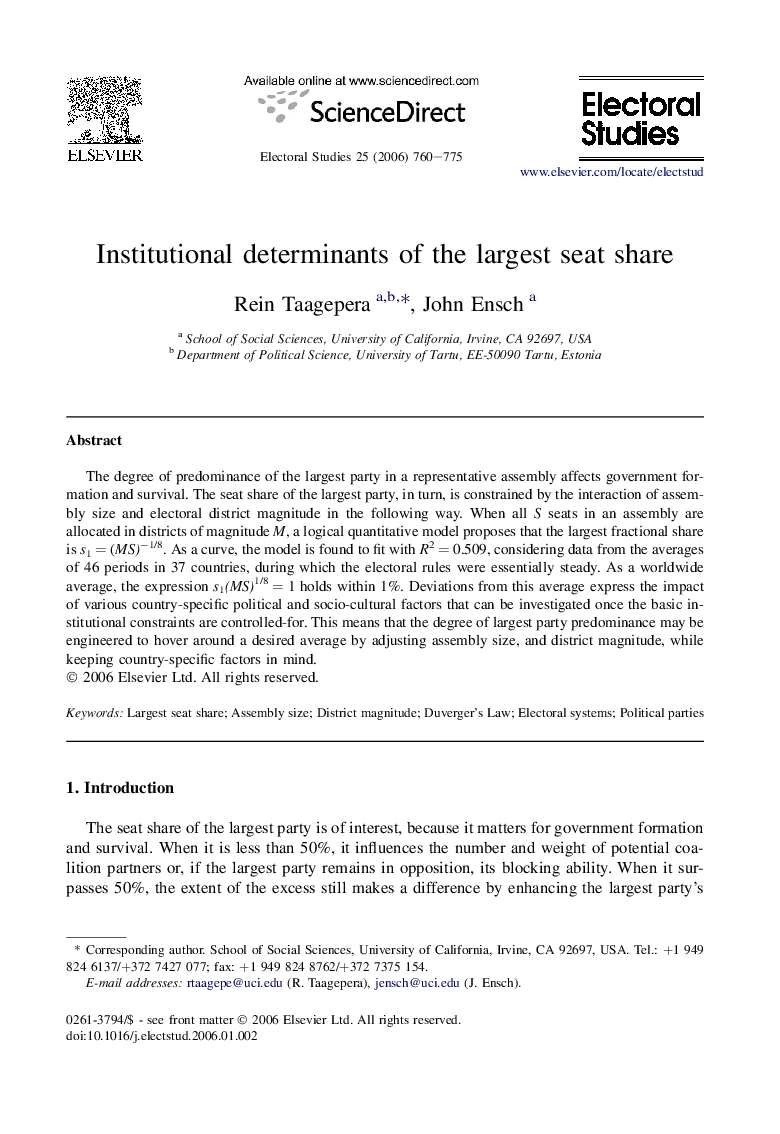| Article ID | Journal | Published Year | Pages | File Type |
|---|---|---|---|---|
| 1052523 | Electoral Studies | 2006 | 16 Pages |
The degree of predominance of the largest party in a representative assembly affects government formation and survival. The seat share of the largest party, in turn, is constrained by the interaction of assembly size and electoral district magnitude in the following way. When all S seats in an assembly are allocated in districts of magnitude M, a logical quantitative model proposes that the largest fractional share is s1 = (MS)−1/8. As a curve, the model is found to fit with R2 = 0.509, considering data from the averages of 46 periods in 37 countries, during which the electoral rules were essentially steady. As a worldwide average, the expression s1(MS)1/8 = 1 holds within 1%. Deviations from this average express the impact of various country-specific political and socio-cultural factors that can be investigated once the basic institutional constraints are controlled-for. This means that the degree of largest party predominance may be engineered to hover around a desired average by adjusting assembly size, and district magnitude, while keeping country-specific factors in mind.
